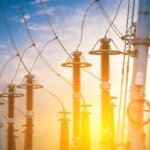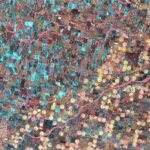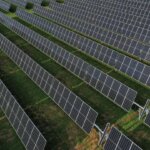Cleantech: bright Net Zero ideas scale-up

Reducing global CO2 emissions is a team effort and it’s no surprise to read that clean technology has a major role to play. But what’s less well known is the outsized contributions that early-stage technologies – ideas that are at prototype or demonstration stages today and solutions in early adoption – will be required to make. The IEA predicts that just 25% of the emissions reduction required will come from technologies that are mature today, and is calling for an acceleration in getting decarbonizing solutions to the market.
Being clear on carbon
Reassuringly, it’s a message that is getting through. In the UK, technology firms are (returning the first few words of this piece) joining forces to reduce CO2 emissions. Tech Zero – whose founding members include Revolut, Starling Bank, Faculty (artificial intelligence), Wise (money-transfer), what3words, Babylon (digital-first health) – is a group for companies that are willing to ‘work together to make faster progress to net zero’. Today, more than 340 firms have signed up. And being part of the movement gives companies the opportunity to engage with climate-tech scale-ups to first measure their emissions as they stand today, and then look at ways to reduce those numbers.
Being part of Tech Zero involves making a pledge to ‘annually measure and publish all scope 1, 2, and 3 greenhouse case emissions’. By definition, this means that members must be aware of emissions from the assets that they own directly, know where their electricity is sourced, and think about the activities that they are indirectly responsible for up and down the value chain. Without a doubt, these activities will only become more mainstream. And while progressive firms are leading the way with initiatives such as having a monthly ESG close alongside conventional bookkeeping activities, others will join them, prompted by regulations.
Market forces are a powerful factor too. Customers are taking an increasing interest in the sustainability credentials of the products and services that they buy. In the workplace, companies are finding that good corporate citizenship helps when it comes to recruitment. Pledges such as those made by Tech Zero members are attractive to new recruits and can help companies to bring additional talent and expertise into their organizations.
Net Zero 3.0
Specifically addressing the need to ramp up on clean technology, Tech Nation (which is also a member of Tech Zero) has announced the latest cohort of its Net Zero scheme for fostering fast-growth tech companies working across digital, hardware and life science sectors. Firms taking part are united by a shared mission to reduce greenhouse gas emissions. And, as the summary below shows, there are some amazing ideas in the programme, which first took place in 2020. In fact, the abundance of great ideas, highlights that the pain points lie further upstream. And it’s here that shared experiences in what’s required to scale up effectively come to the fore – incubated through programmes such as Net Zero, and others.
The full list of this year’s Net Zero participants can be found here, with highlights in the bullets below –
- Agreed (business intelligence) Founders bring their soil science, behavioral change, and satellite data commercialization skills to create a decision tool for farmers, which supports a reduction in the use of synthetic nitrogen fertilizer.
- Agrisound (IoT sensing) In-field detectors for monitoring important insect groups. Data can help to raise crop yields and fruit quality, as well as give evidence of the effectiveness of biodiversity programs.
- Artus (clean tech) Air conditioning system redesign that reduces fan energy usage by 89%.
- Circula (environmental design tool) Software that makes it easy for the construction sector to calculate the environmental impact of new projects and explore scenarios for reducing emissions. Output can be embedded in planning applications and widgets used in design tools.
- Electric Miles (smart app) Intelligent ‘Internet of Energy’ platform aimed at EV drivers and ecosystem providers designed to encourage grid stability. Tool balances peak demand, and helps users charge their electric vehicles at reduced cost and lower carbon footprint.
- Equiwatt (smart app) Provides peak alerts to electricity users so that they can switch off non-essential devices to help energy companies reduce the use of polluting ‘top-up’ power plants.
- Farad (digital twin) AI powered, interactive models for EV charging point developers, renewables providers, and distribution network operators. Data and analytics can help with peak load prediction and more.
- Infyos (business intelligence) Data allows customers to understand, manage, and improve their battery supply chain. Employs blockchain tools to enable materials traceability and help sustainability reporting.
- Ionate (smart grid) Power-flow transformer that uses magnetics to combine a number of steps into one, offering sensing and monitoring, dynamic voltage- and power factor control, and harmonics removal all within one device.
- Foodsteps (big data) Software platform for quickly determining the environmental impact of food operations. Allows businesses to generate food impact labels for their products, and restaurants can add the data to their menus. Full life-cycle assessment of food and drink products can identify potential supply chain issues.
- Muddy Machines (farm robots) News-making precision harvesting agri-tech made famous for being able to autonomously harvest asparagus.
- Oceanways (autonomous submarine) Unmanned microplastic collecting ocean-going vessels that can also transport up to 5kg of cargo. Subs run on a combination of battery power and hydrogen and are friendly to marine life. Vessels can also gather ocean intelligence as they go and plan to collect 300 peta bytes (300k TB) by 2030.
- Power Roll (flexible electronics) Hi-tech materials for generating electricity, storing power, and enabling novel sensing applications.
- Recycleye (robots turning waste into resources) Technology for automatically picking and placing waste materials at a materials recovery facility (MRF). Robots operate over 6-axis of movement and are 75% lighter than standard units. AI vision-based software provides accurate target data for sorting mixed materials more efficiently.
- Signol: (business intelligence) Data platform shows businesses where their waste comes from. Smartphone app gives managers and employees, in sectors such as aviation and maritime, an ‘upbeat’ nudge on how they can save fuel and reduce carbon emissions.
- Space Intelligence (big data) Accurate assessment of carbon stocks over time to validate tree planting and other activities. Analytical solutions have the ability to combine social media and satellite imagery to extract machine learning environmental insight.
- Tribosonics (sensing) Smart materials technology allows customers to monitor machine wear – for example, to predict maintenance schedules much more accurately and reduce unplanned downtime. In a recent case study, a manufacturing client was able to save almost 2 days of production time thanks to the use of Tribosonics’ sensing solution and accompanying algorithms.










